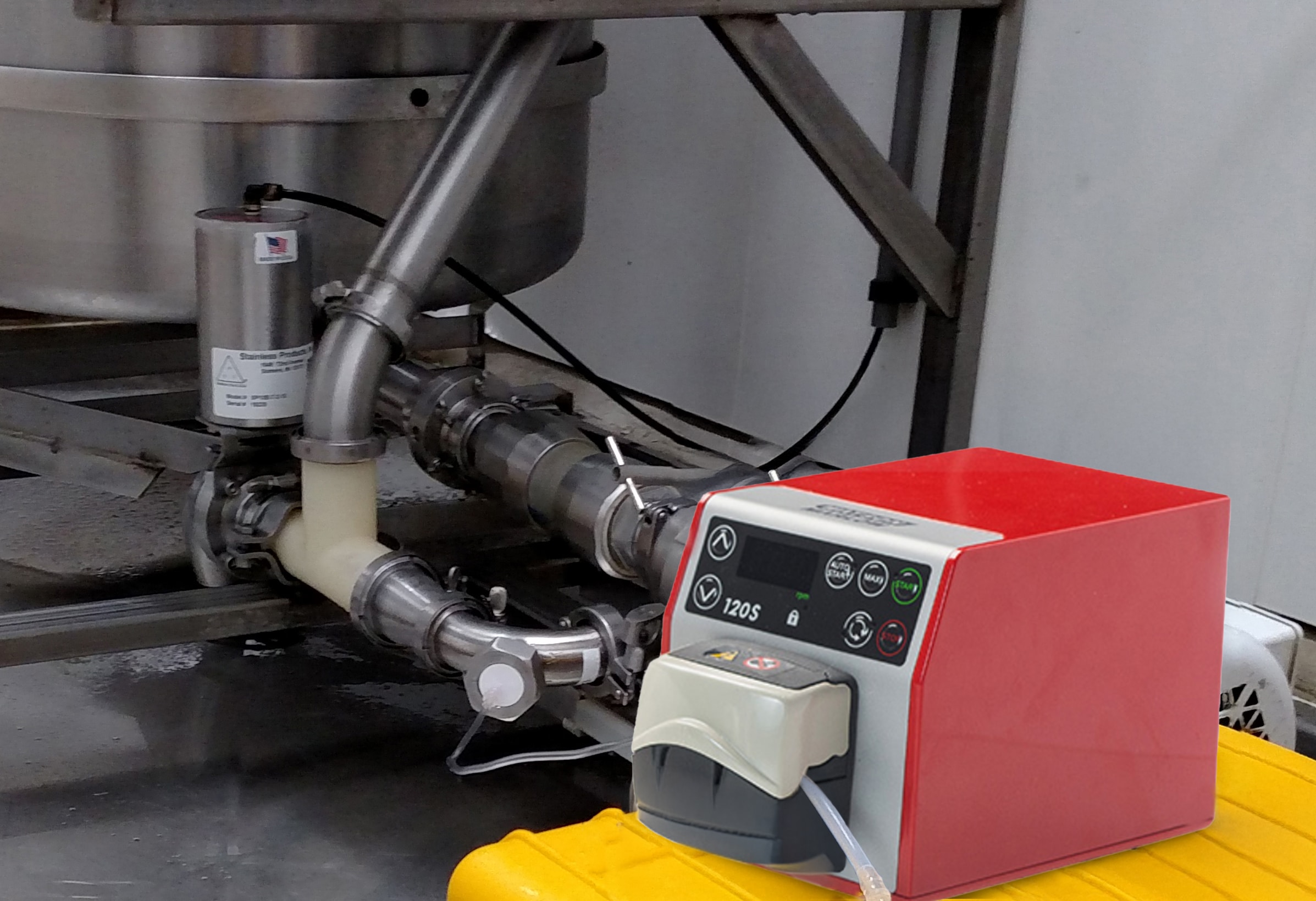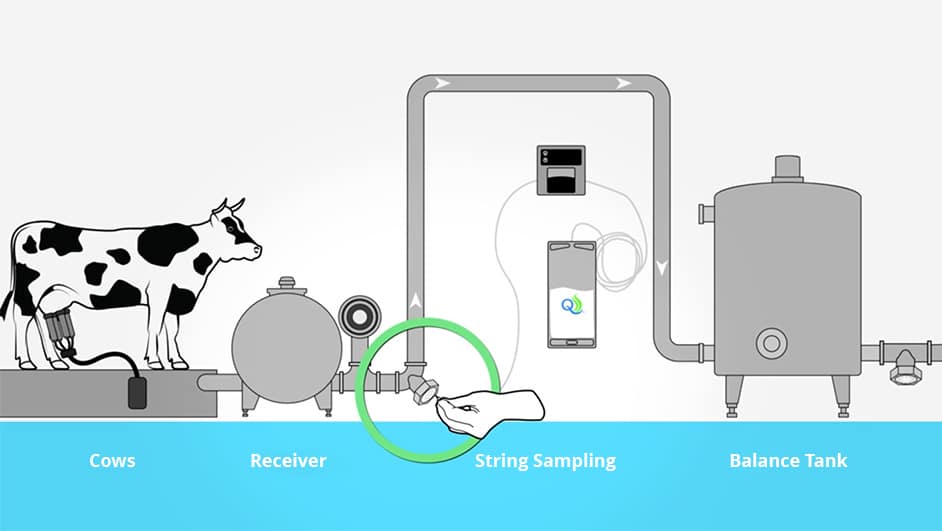Composite String Sampling for Dairy Farms: A Smarter, More Accurate Way to Monitor Milk Quality and Udder Health

Composite string sampling is an innovative method that enables dairy farmers to collect representative milk samples from groups of cows over multiple milkings. Unlike grab or dipper samples, this approach provides a more refined picture of milk quality and udder health by capturing variations that occur across time and between animal groups.
At QualiTru, we believe smarter sampling means better decisions. Composite string sampling—made possible through our aseptic, inline sampling systems—gives producers the data they need to improve hygiene, identify milk quality problems sooner, and streamline mastitis management protocols.
Why Use Composite String Sampling on Your Dairy?
Traditional milk quality and mastitis monitoring programs rely on individual cow samples or bulk tank samples for data collection. Both have limitations:
- Individual cow samples are accurate but highly labor-intensive and costly.
- Bulk tank samples are easy to collect but the comingled milk dilutes the signal, making it hard to pinpoint problems in specific groups or locations.
Composite string sampling bridges this gap, offering the following benefits:
1. Monitor Raw Milk Quality More Precisely
String sampling collects milk from groups of cows over multiple milkings into a single, aseptic container. This method allows for:
- Reliable Standard Plate Count (SPC) and Somatic Cell Count (SCC) testing results
- Consistent detection of fluctuations in milk fat and protein levels
- Early identification of trends that may impact raw milk quality
2. Improve Dairy Farm Sanitation Monitoring
String sampling can help detect and pinpoint elevated levels of bacterial contaminants, such as coliforms and psychrotrophic spoilage organisms, that may indicate hygiene or milking equipment issues. By identifying increases in contaminating organisms along the process flow, producers can pinpoint sources of contamination more easily and take corrective actions more quickly.
3. Strengthen Mastitis Detection and Udder Health Programs
By reducing the dilution effect seen in bulk tank samples, string sampling may improve the detection of contagious mastitis pathogens. When string samples are taken from milk lines serving specific milking strings, the data may:
- Narrow the search for infected cows by identifying affected groups
- Reduce labor and testing costs compared to whole-herd testing
- Support more targeted mastitis control interventions
This group-based insight helps farmers manage udder health more effectively while saving time and resources.
What the Research Shows: Composite String Sampling vs. Traditional Bulk Tank Sampling
A field validation study by the University of Minnesota (Godden et al., 2002) compared milk line composite sampling to traditional bulk tank sampling. The study found:
- Good-to-excellent agreement between milk component results from string sampling and bulk tank samples, validating string sampling as a reliable alternative.
- Increased sensitivity for detecting mastitis pathogens due to reduced dilution compared to bulk tank samples.
- Potential for environmental bacterial counts from string samples to reflect changes in farm hygiene and sanitation practices.
The authors concluded that composite milk line sampling is a valuable addition to a farm’s monitoring strategy, noting that it “may be useful for evaluating the performance of a specific group of cows, by comparing milk composition data from samples collected from milk lines serving different groups.” This enables producers to gain actionable insights about herd subgroups, improving decision-making for nutrition, health interventions, and overall milk quality management.
How It Works
Using QualiTru’s inline aseptic sampling systems, producers can collect representative string samples directly from existing milk lines without introducing contaminants. Sample collection is simple, sterile, and proven effective. Our systems integrate easily with existing milking equipment and work with peristaltic pumps to gather precise volumes over time.

Milk coming out of the receiver represents the commingled milk of the group of cows (string) currently being milked in the milking parlor. Samples should be collected at the receiver at least once for each string. The TruDraw® Sterile Single Sampler is ideal when a small sample is required. However, the best method to collect the sample consistently throughout milking is by using a TruMotion™ 2 liter Collection Bag and Watson-Marlow peristaltic pump (or equivalent QualiTru peristaltic pump offering).
Key Benefits of Composite String Sampling
- Accurate and more precise SPC and SCC data
- Increased sensitivity of mastitic bacteria detection
- More precise monitoring of environmental hygiene
- Streamlined nutrition management based on milk components
- Reduced labor costs vs. individual cow sampling
- Strong compliance with the Pasteurized Milk Ordinance (PMO) and quality programs
QualiTru’s sampling solutions provide a simple, fast, and versatile approach to monitoring milk quality on dairy farms. Designed for seamless integration, these ready-to-use systems support accurate composite string sampling and milk line sampling to track udder health, bacterial counts, and milk components—helping dairy producers optimize herd nutrition, improve milk quality, and ensure regulatory compliance.
- Composite Sampling
- TruStream7 Tri-Clamp Tee 2” (Part #215147) or TruStream 7 Tri-Clamp Elbow 2″ (Part #213029)
- TruStream7 Septum (Part # 110011)
- TruStream 250ml/18g (Part #111450) or TruMotion 2L/18g w/2.0mm Tubing (Part #111770) with a Watson-Marlow Pump (Part #500000) for a representative sample or the TruDraw® Sterile Single Sampler (Part #112021) for a small, aseptic sample
Start Sampling Smarter
Composite string sampling gives you the data you need to stay ahead of problems before they affect your milk check. With better visibility into milk quality and udder health, you can make proactive decisions that enhance productivity, reduce losses, and support long-term herd health.
Have questions about composite string sampling for dairy farms?
Need a quote? We’ll respond to
your request quickly.
Looking for one of our global distribution partners near you?
To learn more about Composite Sampling on your farm, please call 651-501-2337 or email us at [email protected]
References:
Godden, S. M., McMartin, S., Feirtag, J., Stabel, J., Bey, R., Goyal, S., & Fetrow, J. (2002). Field validation of a milk-line sampling device for monitoring milk component data. Journal of Dairy Science, 85(8), 2192–2196. https://doi.org/10.3168/jds.S0022-0302(02)74295-1



